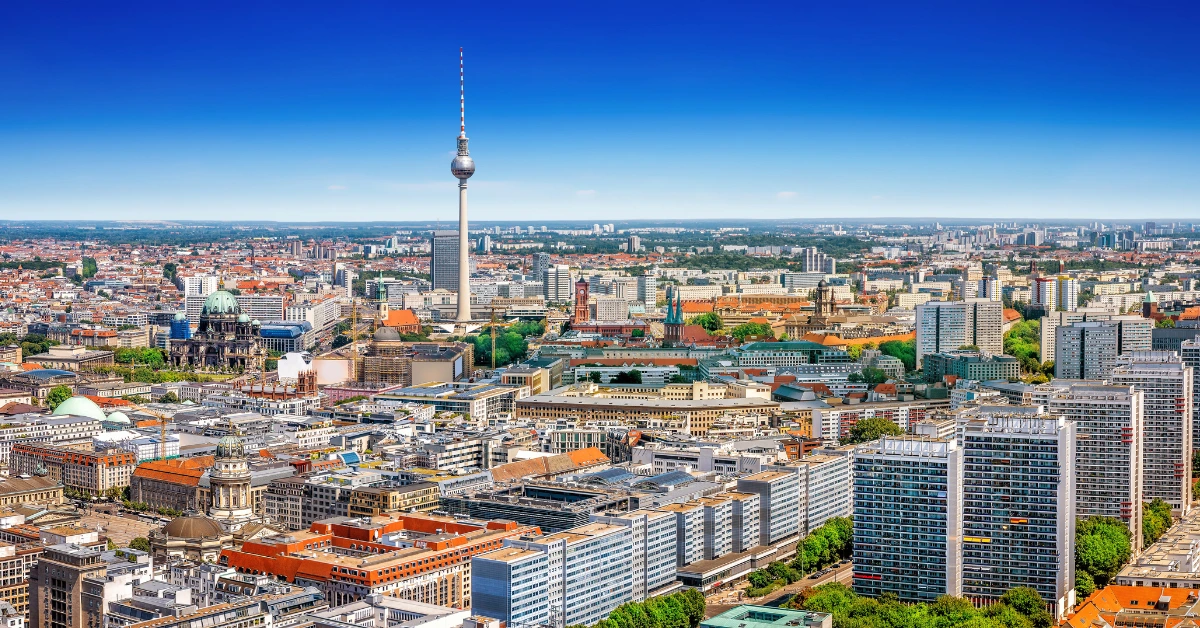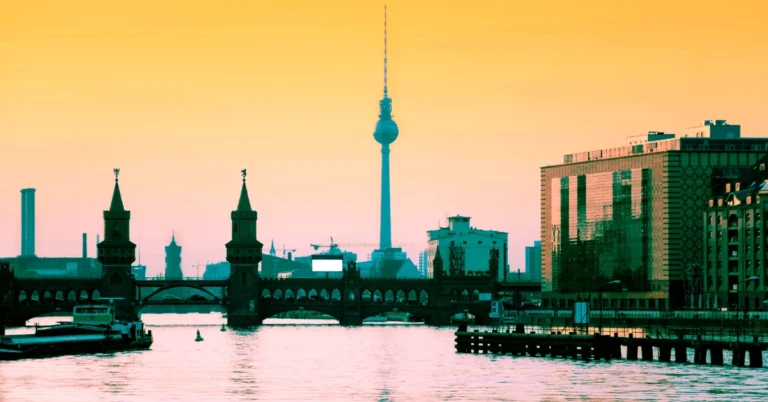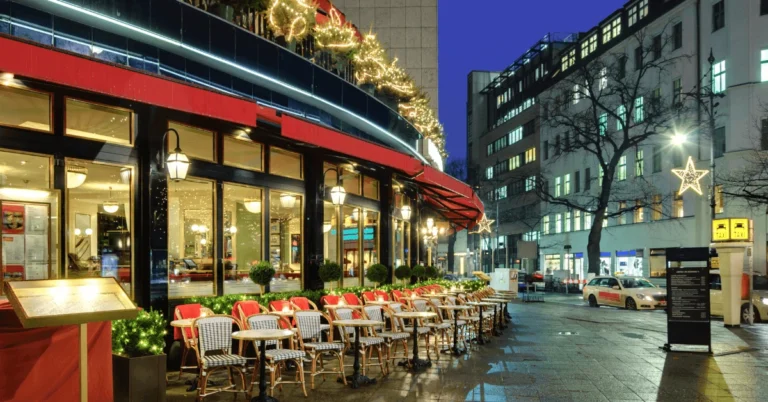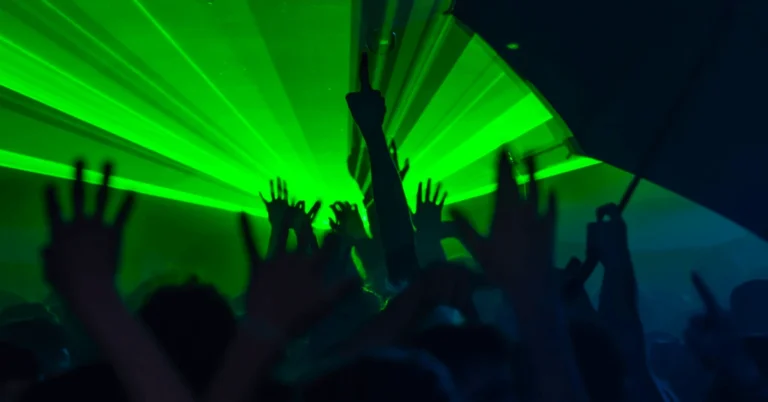Berlin’s architecture is a testament to the city’s remarkable journey from historical depth to modern innovation. This article dives into how Berlin’s buildings narrate a story of resilience, blending historical monuments, modernist movements, and the impacts of World War II with contemporary design and rebuilding. Discover the unique architectural contrasts that define Berlin, from the remnants of the Berlin Wall to the futuristic skyline of Potsdamer Platz, and understand how these elements make the city’s architecture a key player in its rich cultural and historical tapestry.
Berlin Architecture: Historical Overview
Formation and Growth
In our city’s infancy, the humble beginnings in the medieval period were foundation stones for future grandeur. The growth burgeoned under Prussia’s influence, showcasing the power and sophistication of its time with neoclassical monuments that still stand resplendent today.
Impact of World War II
World War II was catastrophic, scarring the city’s fabric with loss and destruction. But as resilient as we are, Berlin’s post-war architecture rose from the ruins, reminding us of the indomitable human spirit and our capacity to rebuild and restore.
The Division and Reunification Era
The aftermath of the war divided the city; East and West Berlin developed contrasting architectural styles reflecting each side’s ideology. The fall of the Berlin Wall heralded reunification, and the city’s architecture transformed once more, blending old with new to symbolize our unified future.
Famous Landmarks and Monuments
Brandenburg Gate and Reichstag
Brandenburg Gate is more than just an architectural marvel; it’s a symbol of unity. It has witnessed turmoil and joyous celebrations since its completion in the late 18th century. A stone’s throw away lies the Reichstag Building, with its iconic glass dome representing political transparency. These landmarks are a must-see for truly grasping Berlin’s political evolution.
Berlin Cathedral and Museum Island
On Museum Island, Berlin Cathedral boasts its magnificent dome, a pinnacle of the cityscape. As the largest church in Berlin, it showcases imposing brick architecture and encapsulates a blend of Renaissance and Baroque elements. Nearby, the island’s ensemble of museums offers a sanctuary for art and history enthusiasts.
Memorial to the Murdered Jews of Europe and Berlin Wall
We must not forget the evocative Memorial to the Murdered Jews of Europe, a somber tribute to lives lost during the Holocaust. The stark, stelae field is a powerful reminder of our history. In contrast, the vibrant East Side Gallery, a preserved section of the Berlin Wall, encapsulates the spirit of freedom with its array of murals, making it a fundamental part of Berlin’s urban landscape.
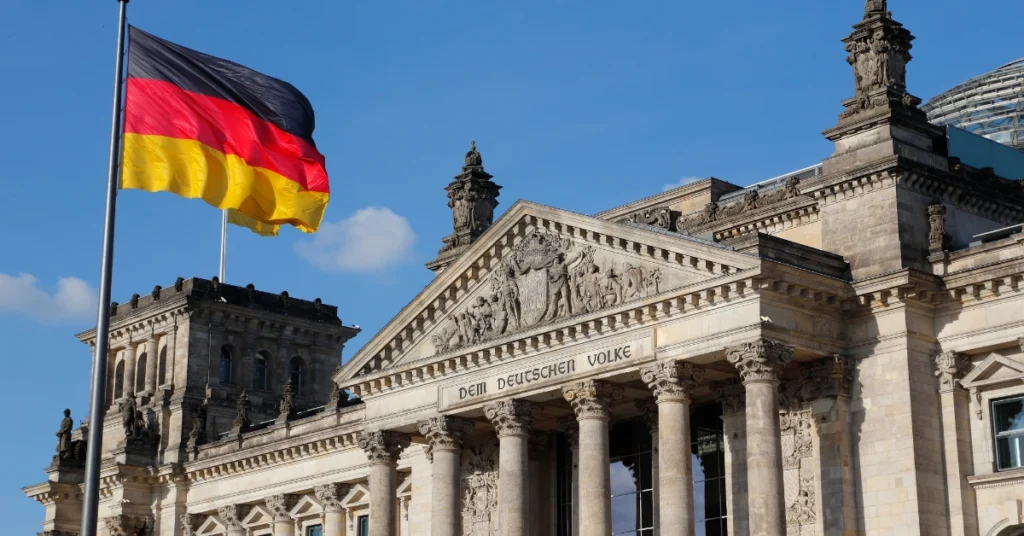
Architectural Styles and Influences
Pre-20th Century
In Berlin, the Neoclassical style is a testament to the city’s taste for grandeur and symmetry, evident in landmarks like the Brandenburg Gate and the Berlin Cathedral. The influence of Art Nouveau is also notable, offering fluid, organic designs as counterpoints to the more rigid classical forms.
Bauhaus and Modernism
The functional clarity of the Bauhaus School marks the 20th-century architectural shift. This movement profoundly molded Berlin’s urban fabric with its focus on simplified forms and harmonious function within the city and worldwide.
Contemporary and Postmodern
Moving into Berlin’s more recent architectural additions, we encounter sleek Contemporary structures and playful Postmodern Design elements. The city’s panorama juxtaposes the stark, compelling lines of Brutalist buildings with the whimsical and bold statements of postmodern creations, highlighting a diverse architectural dialogue.
Renowned Architects and Their Works
Walter Gropius and Mies van der Rohe
Walter Gropius pioneered the Bauhaus movement, which significantly impacted the cityscape with its minimalist and functional ethos. One of Gropius’s notable contributions to Berlin is the Gropiusstadt, a large housing estate that exemplifies the social ideas and aesthetics of Bauhaus architecture.
Another Bauhaus icon, Ludwig Mies van der Rohe, created influential works like the Neue Nationalgalerie. His clear, refined lines and harmonious use of space have etched an indelible mark on Berlin’s architectural heritage.
Norman Foster and Frank Gehry
Sir Norman Foster’s influence on Berlin’s skyline is unmissable with the Reichstag Dome, a glass marvel that signifies transparency and unity.
Frank Gehry’s contribution, on the other hand, displays his signature deconstructivist style at the DZ Bank Building. Its dynamic shapes and forms are a visual treat amidst the more classical structures of Berlin.
Daniel Libeskind and David Chipperfield
Daniel Libeskind added the Jewish Museum Berlin to Berlin’s portfolio with its zigzagging design and poignant exhibition spaces that evoke Berlin’s layered history.
David Chipperfield has contributed to Berlin architecture through his elegant renovation of the Neues Museum, masterfully blending historical integrity with modern sensibility.
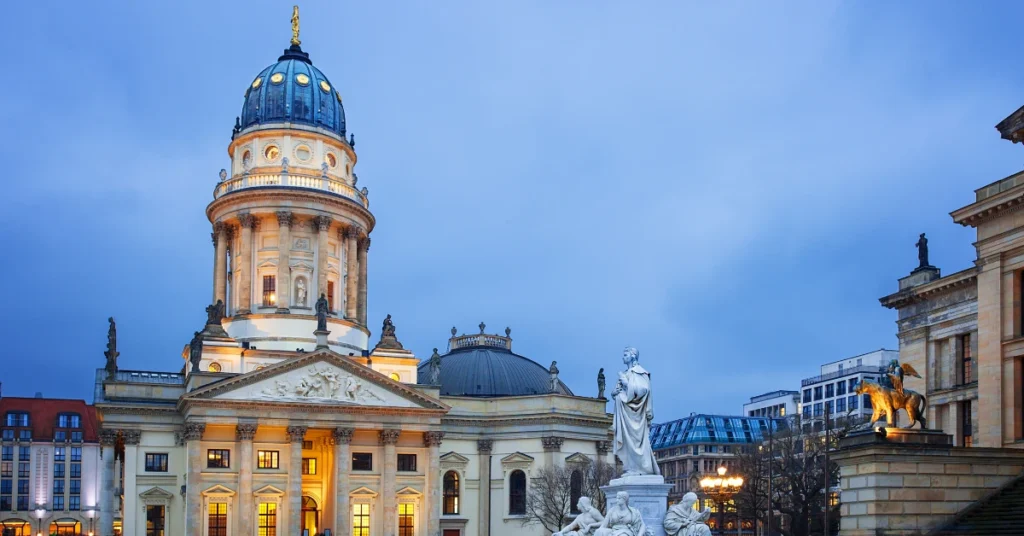
Government and Institutional Buildings
Reichstag and Federal Chancellery
The Reichstag, home to the German parliament, is a testament to Berlin’s resilience and renewal. Restored with a modern twist, its glass dome, designed by architect Norman Foster, symbolizes transparency and offers panoramic city views. Just a stone’s throw away, the Federal Chancellery is one of the largest government headquarters in the world, an impressive example of postmodern architecture with its striking use of glass and concrete.
Foreign Embassies and Cultural Institutes
Berlin’s foreign embassies and cultural institutes are also integral to the tapestry of Berlin architecture. Each embassy brings a piece of its home country to the streets of Berlin, from the futuristic Nordic Embassies’ complex to the ornate Turkish Embassy. These buildings serve diplomatic functions and stand as cultural beacons, promoting global exchange and artistic dialogue within the city.
Residential Architecture
Historic Homes and Apartments
Berlin’s Kreuzberg district is synonymous with historic charm. Picture walking down its streets lined with Altbau—the term for buildings constructed in Berlin before World War II. These residential structures often feature ornate facades, towering ceilings, and large, wood-framed windows. Such buildings are coveted for their historical value, telling the tales of a Berlin that has seen dramatic changes.
Modern Living Spaces
Then there’s the draw of Mitte, where the old and new fuse seamlessly. Here, modern living spaces encapsulate the innovative spirit of contemporary Berlin residential architecture. The clean lines, glass facades, and minimalist aesthetics are a canvas for modern urban life. These buildings are more than just a place to live; they’re a statement of the city’s ever-evolving identity, reflecting a commitment to forward-thinking design and sustainability.
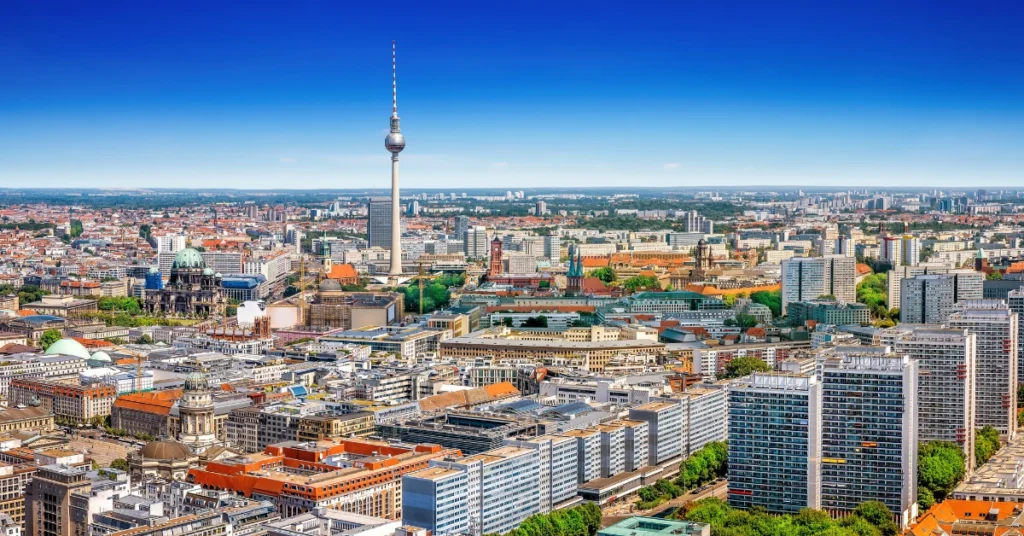
Urban Development and Public Spaces
Potsdamer Platz and Alexanderplatz
Potsdamer Platz is a prime example of Berlin’s architectural renaissance. Once a desolate no-man’s land, it has transformed into a bustling hub featuring cutting-edge designs. The nearby Alexanderplatz is another showcase of urban transformation, where historic structures meet contemporary innovations, reflecting Berlin’s resilient spirit.
- Mitte: The central district plays a pivotal role.
- Potsdamer Platz: Epitome of urban renewal.
- Alexanderplatz: Fusion of old and new Berlin.
Parks and Riverfront Areas
We find serenity at Gendarmenmarkt and the jovial streets of Hackescher Markt, where parks and riverfront areas offer green havens amid the urban sprawl. The banks of the River Spree invite us to enjoy meandering paths and scenic views, which contribute significantly to the city’s charm and liveability.
- Gendarmenmarkt: Cultural and architectural splendor.
- Hackescher Markt: Lively and diverse experiences.
- River Spree: Natural beauty enhancing urban life.
Cultural Centers and Museums
Jewish Museum and Berlin Historical Museum
The Jewish Museum, with its striking deconstructivist design, captures the essence of Berlin’s creativity and serves as a poignant narrative of Jewish history in Germany. A short journey through the city’s storied avenues brings us to the Berlin Historical Museum. This museum offers an immersive dive into the city’s past, presenting artifacts in a bold architectural setting that brilliantly juxtaposes modern design with historical substance.
Art Galleries and Exhibit Spaces
Museum Island is a cornucopia of culture, housing the Neues Museum alongside other illustrious institutions. Here, you’re surrounded by a world-class collection of artifacts within an architectural marvel restored by British architect David Chipperfield. Not far from this UNESCO World Heritage site is the Kulturforum, an urban cultural district that hosts the Neue Nationalgalerie. It is a true testament to the dynamism of Berlin architecture, boasting a vast Modern Art Collection and showcasing works in an edgy, contemporary space.
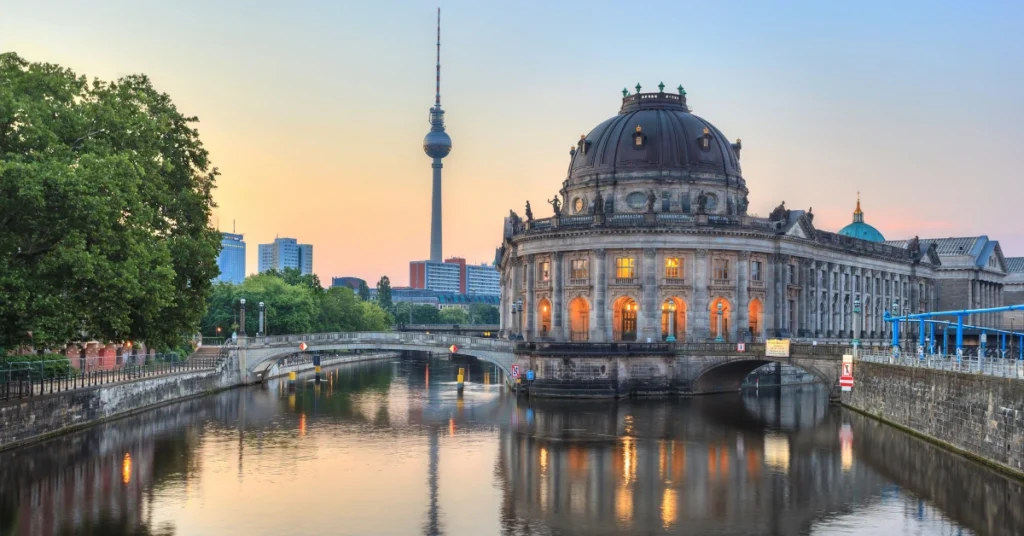
Transportation and Infrastructure
Central Station and Major Airports
Berlin’s Central Station, known as Hauptbahnhof, is a modern icon. It interconnects local and international lines in a display of efficiency and architectural brilliance. It’s among Europe’s most contemporary stations, merging steel, glass, and cutting-edge design. Berlin also hosts two major airports, Tegel and Schönefeld, which are essential for both international travelers and the city’s economic flow.
Bridges and Tunnel Constructions
Our bridges and tunnels are marvels of engineering, often overshadowed by our city’s more immediate attractions. A staggering 979 bridges lace the Spree and other waterways. For example, the Oberbaum Bridge couples practicality with aesthetic splendor, connecting Friedrichshain and Kreuzberg over the Spree River. It serves as a testament to our historical and modern-day feats in infrastructure.
Green Architecture and Sustainability
Eco-friendly Building Practices
Our journey towards a more sustainable urban landscape involves architects and firms like OMA leading the way in Sustainable Architecture. In Berlin, using recycled materials, green roofs, and water-efficient systems is no longer an afterthought. They are integral to contemporary architectural designs that prioritize aesthetics and environmental impact.
- Materials: Emphasis on recycled and locally-sourced materials
- Design: Incorporation of natural lighting and ventilation to minimize energy use
- Biodiversity: Integration of green spaces to support urban wildlife
Innovative Energy Solutions
Beyond the physical materials, Berlin’s buildings are becoming powerhouses of energy efficiency. Harnessing renewable energy sources, such as solar panels and geothermal heat pumps, transforms how we power our lives. Contemporary Architecture in Berlin doesn’t just look towards the present; it aims to secure a more sustainable future.
- Solar Power: Exploitation of photovoltaic systems to generate clean electricity
- Geothermal: Utilization of the earth’s natural heat for building temperature regulation
- Smart Tech: Adoption of intelligent systems for optimizing energy consumption
Our engagement with green architecture and sustainable solutions in Berlin is not just a trend—it’s our collective commitment to the well-being of our planet. Through innovative design and technology, we continue to redefine Berlin’s architectural landscape for a greener tomorrow.
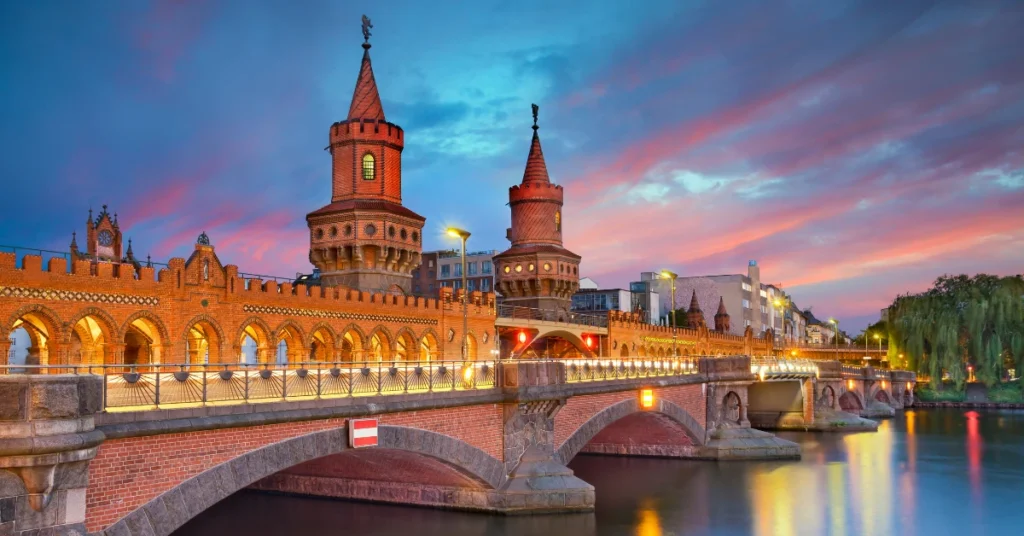
Frequently Asked Questions
What architectural style is in Berlin?
Berlin’s architecture blends historic and modern styles, from Baroque and Neoclassical to Bauhaus and contemporary, reflecting its diverse history and cultural shifts.
What is the famous architectural building in Berlin?
The Brandenburg Gate is a famous architectural landmark in Berlin. Its neoclassical style symbolizes unity and peace.
Why is Berlin so modern?
Berlin’s modernity stems from its post-WWII reconstruction and reunification, which spurred innovative urban development and architectural projects, showcasing resilience and forward-thinking.
Why is Berlin so attractive?
Its rich history, vibrant culture, and dynamic arts scene attract Berlin. Its mix of old and new, affordability, and open-minded atmosphere create a unique, lively urban experience appealing to residents and visitors alike.
If you liked this blog post about the topic: Berlin Architecture, don’t forget to leave us a comment down below to tell us about your experience with it.

